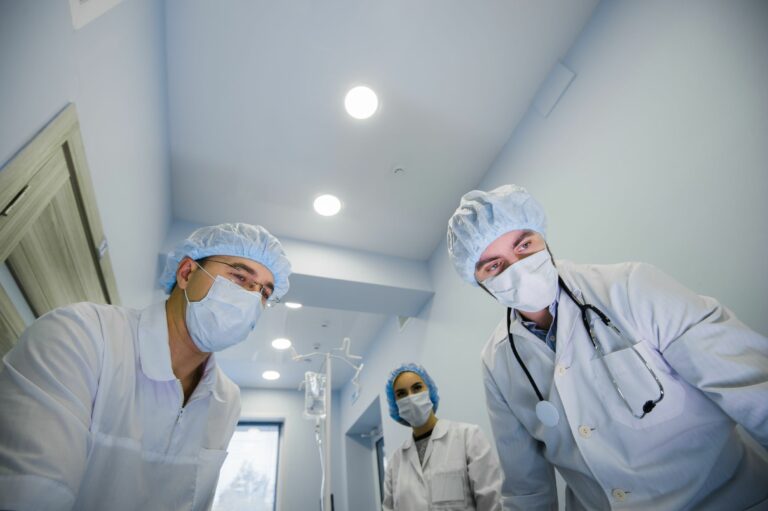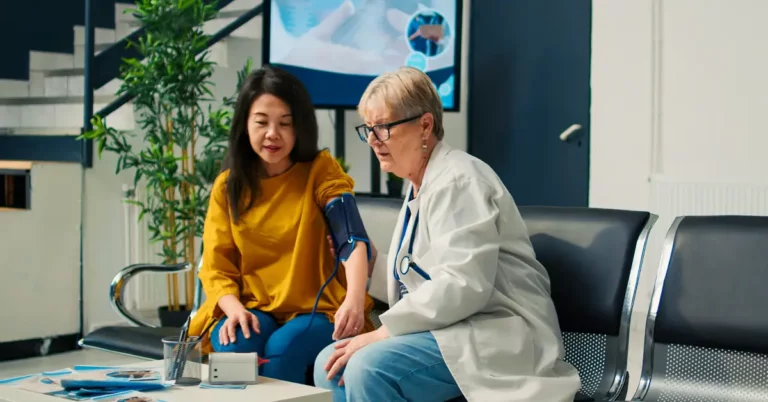Tucked inconspicuously in the lower front part of the neck is a small butterfly-shaped gland known as the thyroid. The thyroid gland produces hormones that are crucial for the body’s proper growth, function, and metabolism. Current data suggest that more than 12% of Americans will develop a thyroid disorder during their lifetime, and around 20 million Americans have some form of thyroid disorder, with women being more at risk than men. Up to 6 out of 10 Americans affected may even be unaware that they have such a disorder, and hence unaware of what to look out for that may help them detect a thyroid condition.[1]
The presence of excessive levels of these thyroid hormones is known as thyrotoxicosis or “toxic” thyroid, which can be endogenous (from within the body itself) or exogenous (from outside the body, such as the intake of medications). This is differentiated from hyperthyroidism, which refers specifically to the overproduction of thyroid hormones by a hyperactive thyroid gland. More often than not, these terms are interchangeable since the most common cause of thyrotoxicosis is hyperthyroidism. This hormonal imbalance may then result in several distinct features. Here we look at 6 telltale signs and how remote patient monitoring can help.
Goiter
The thyroid gland, being only about 12-20 grams in size, is normally not readily visible or palpable, but with the presence of thyroid disorders, one of the most common signs is an increase in the size of the thyroid, which is known as a goiter. The whole thyroid can be diffusely enlarged, or there could be nodules/masses in the gland that cause the visibly increased size, in which case the gland will appear asymmetrically enlarged. Its consistency may also vary depending on the cause of the enlargement: usually it will be soft or doughy, but it can also be firm or bumpy/nodular.
Doing a self-check of the thyroid gland can be helpful in detecting a goiter. The steps are as follows:
- Face a mirror
- Tilt head slightly backwards, extending/exposing the neck
- Swallow by sipping water or any other liquid
- Examine the area below the Adam’s apple while swallowing for any lumps or masses
- Palpate the area for any lumps or nodules
Weight loss
Since thyroid hormones are also responsible for metabolism, or how our bodies use and store energy, an increase in these hormone levels would also affect a person’s weight. People with a toxic thyroid often have a normal or increased appetite, but lose weight or have difficulty gaining weight in most cases due to the increased basal metabolic rate (energy burned by the body when at rest). This may not be detected early on especially if the increased appetite and resultant increased food intake matches the increased energy burn, but regular monitoring of one’s weight with a weighing scale, such as the DrKumo Smart Scale with body composition analysis, may unmask the trend of weight loss early on, helping to detect a thyroid disorder.
Palpitations
An elevated level of thyroid hormones also affects the heart. A markedly increased heart rate is common in people with hyperthyroidism. In some people, the normal rhythm of the heart may also be affected, causing a rapid, irregular heart rate, which upon checking with an electrocardiogram, would turn out to be atrial fibrillation. These abnormalities in heart rate and rhythm can be felt as palpitations by patients, and can be indicative of a toxic thyroid. DrKumo RPM devices such as the pulse oximeter or smartwatch with electrocardiogram capabilities can help patients check their heart rate/rhythm for these anomalies that may indicate a thyroid disorder.
Hypertension
Hyperthyroidism causes increased stiffness of the arteries with increased contractility of the heart, resulting in isolated systolic hypertension with a widened pulse pressure[2] (wide difference between systolic and diastolic blood pressure). In some cases, restoration of normal thyroid function after treatment for hyperthyroidism normalizes the blood pressure, but there have also been cases where the hypertension did not revert to normal even after treatment, which can lead to an increased risk for heart problems in the long run.[3] Therefore, early detection of this manifestation is important, and the use of RPM devices such as a blood pressure monitor would be beneficial.
Tremors
In thyrotoxicosis/hyperthyroidism, the elevated thyroid hormones cause increased activation of the adrenergic nervous system. This means the body is in a heightened excitable state, and this manifests in hyperactivity, nervousness, and irritability. Besides the palpitations and hypertension mentioned above, this nervous excitability also manifests in tremors, which is best spotted when patients extend their arms and stretch out their fingers. This may affect patients’ ability to do tasks requiring fine motor control. Once thyroid hormone levels have been restored to normal, the tremors are also expected to disappear.
Eye enlargement
Often, but not always, people with hyperthyroidism also develop eye enlargement, most commonly in both eyes (but one side only is also possible). This is found in patients whose hyperthyroidism is caused by Graves’ Disease, wherein abnormal antibodies are present, and these antibodies are what affect the structures around the eyes, causing swelling and enlargement. If the thyroid disorder is caught early on and treatment is started promptly, the eye enlargement is often reversible, but if left alone for years then the damage may be permanent.
Visual cues as to the presence of eye enlargement are as follows:
- Looking from the side, if the eyeball bulges too far beyond the limits of the eyelids
- Looking from the front, if the whites of the eyes (sclerae) are visible above the pupil (this is normally covered by the upper eyelids)
Takeaway
Early detection of the signs of a toxic thyroid is essential to avoiding long-term complications and cardiovascular risks. Awareness of these signs and symptoms, and the application of technology using RPM devices to check patient parameters can be helpful. Several devices under DrKumo Remote Patient Monitoring platform can be effectively utilized in this regard and may lead to early detection and prompt treatment of this condition.
References:
- American Thyroid Association. (n.d.). General Information/Press Room. Retrieved January 3, 2022, fromhttps://www.thyroid.org/media-main/press-room/
- Klein, I. (June 1, 2021). Cardiovascular effects of hyperthyroidism. UpToDate. Retrieved January 4, 2022, from https://www.uptodate.com/contents/cardiovascular-effects-of-hyperthyroidism
- Leung, A. M. (n.d.). Vol 7 issue 8 p.5-6. American Thyroid Association. Retrieved January 4, 2022, from https://www.thyroid.org/patient-thyroid-information/ct-for-patients/vol-7-issue-8/vol-7-issue-8-p-5-6/








